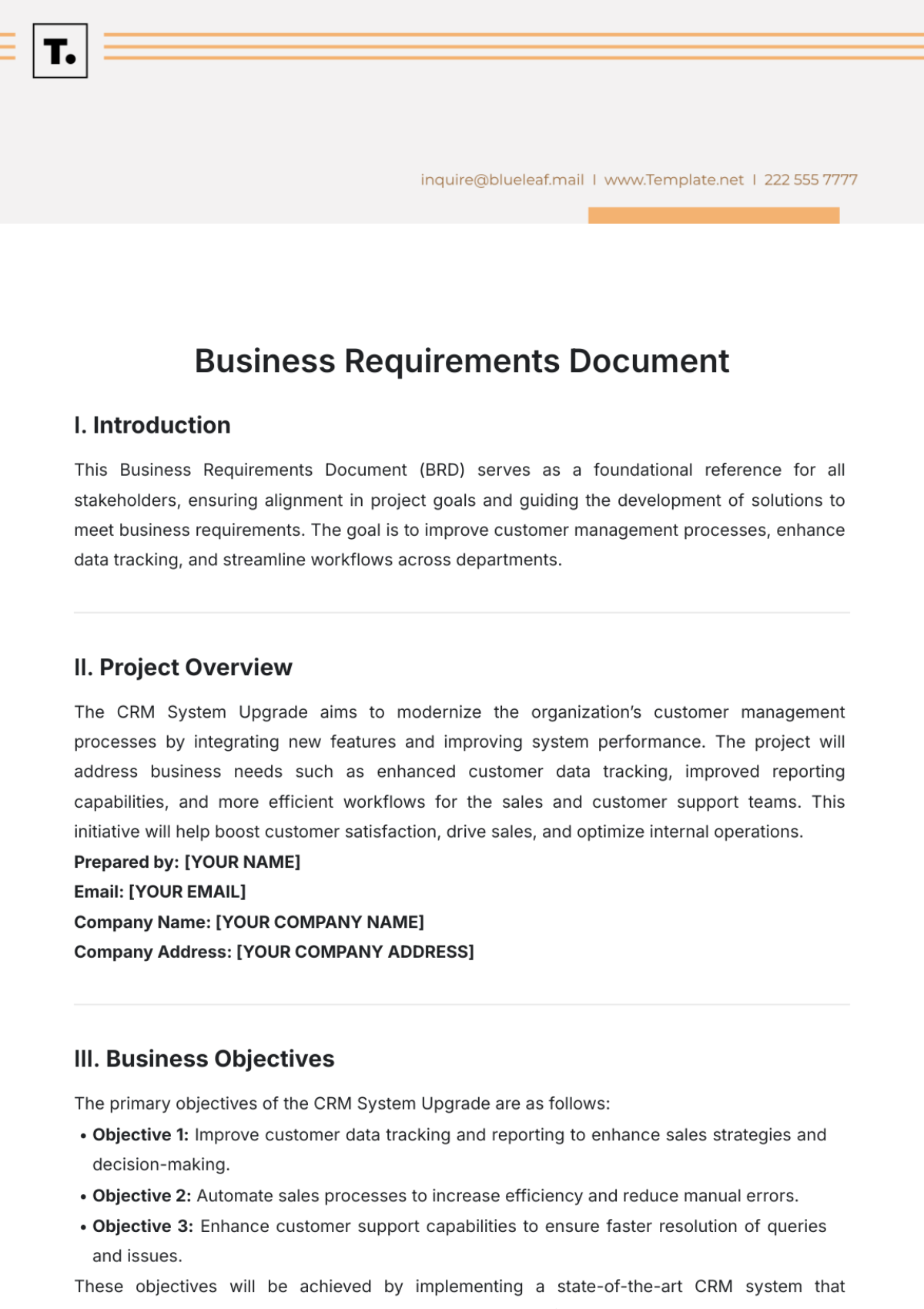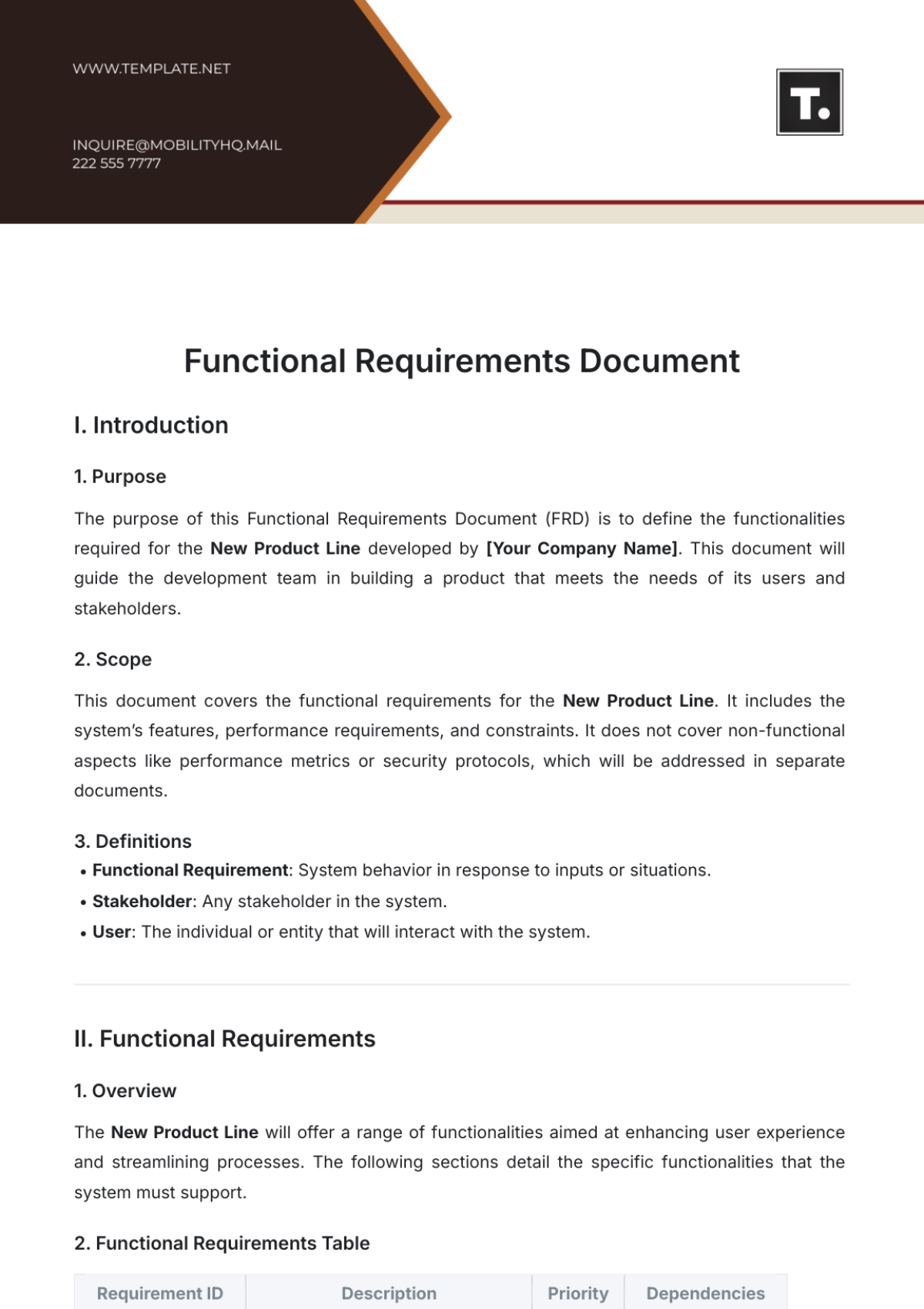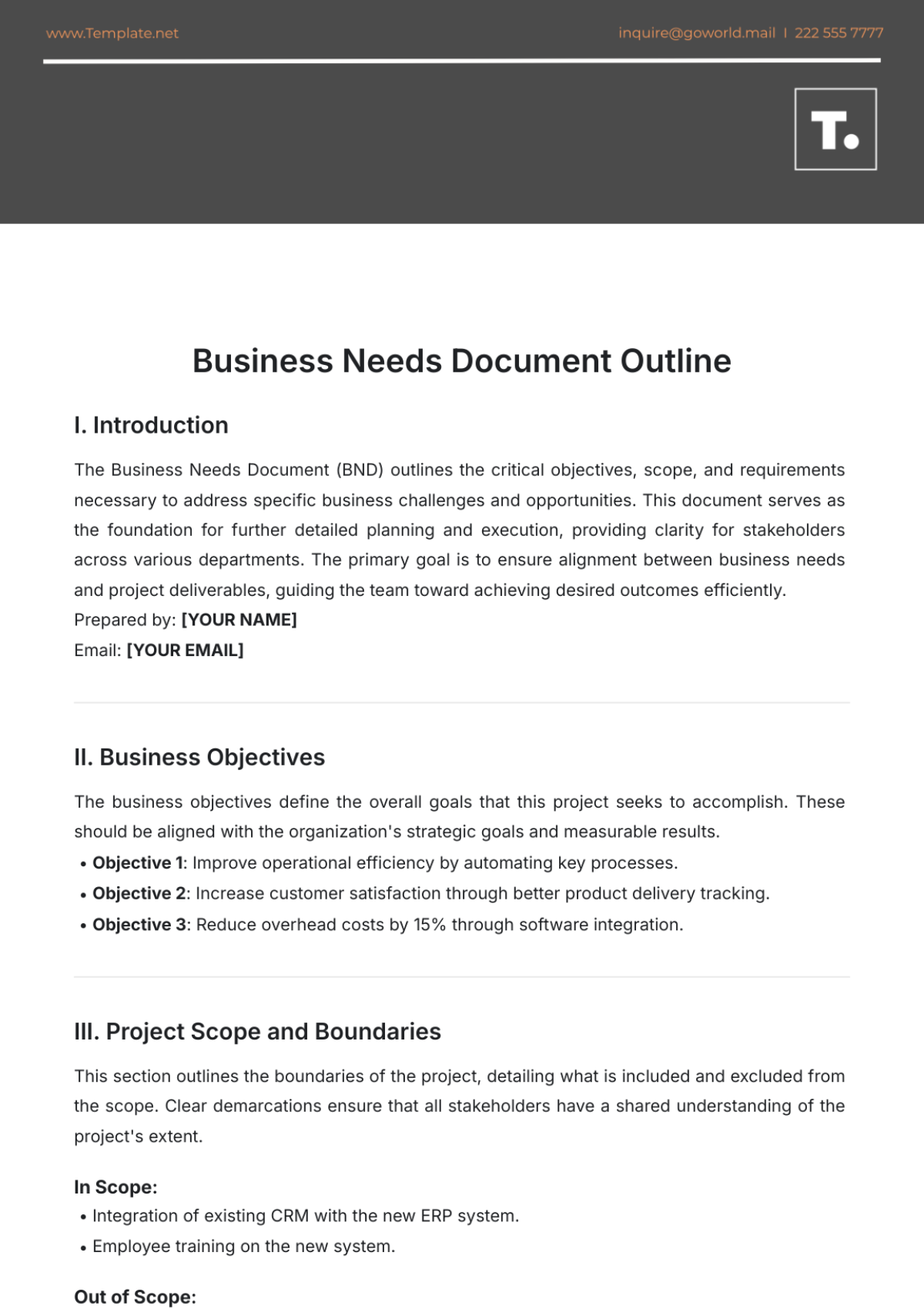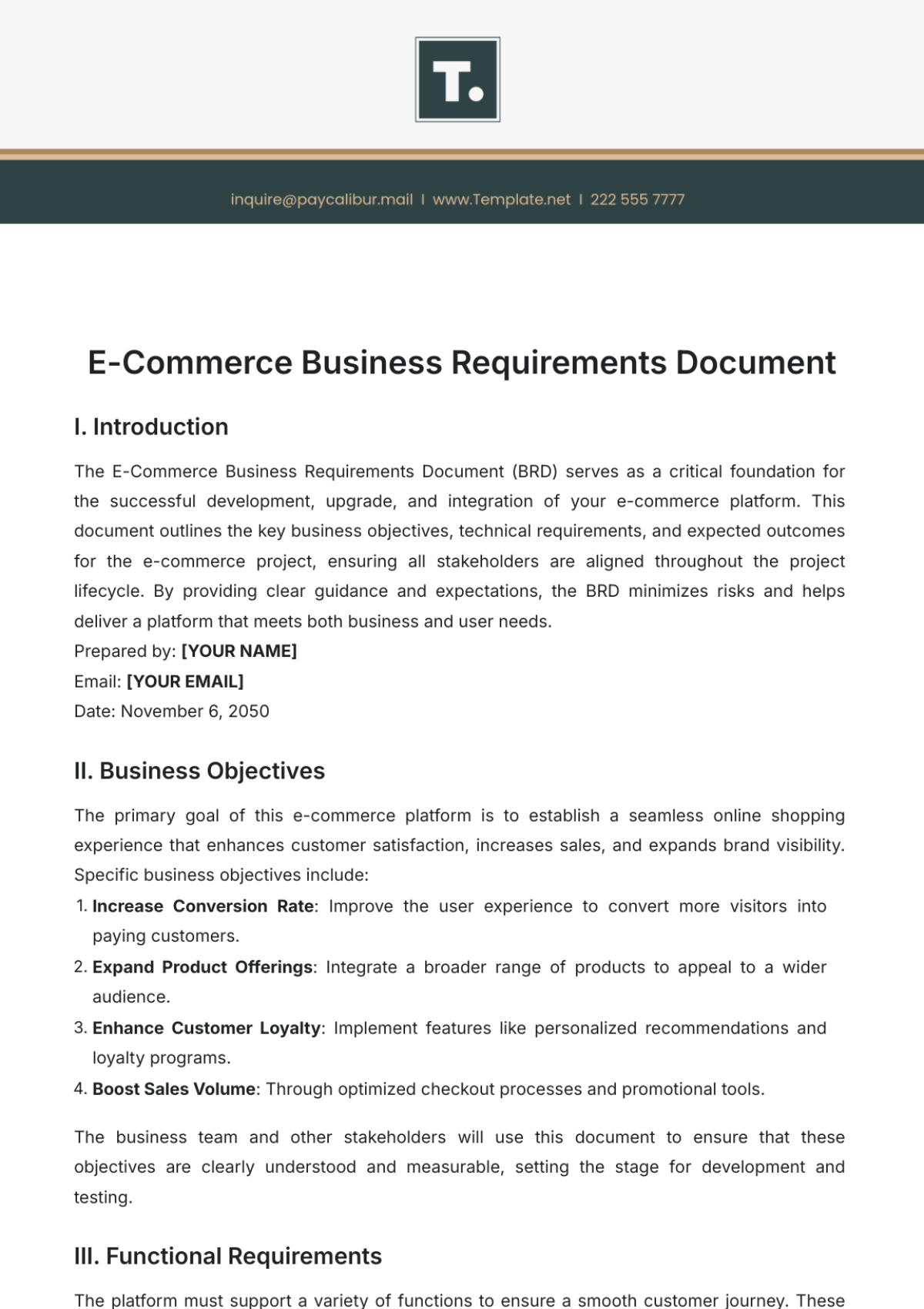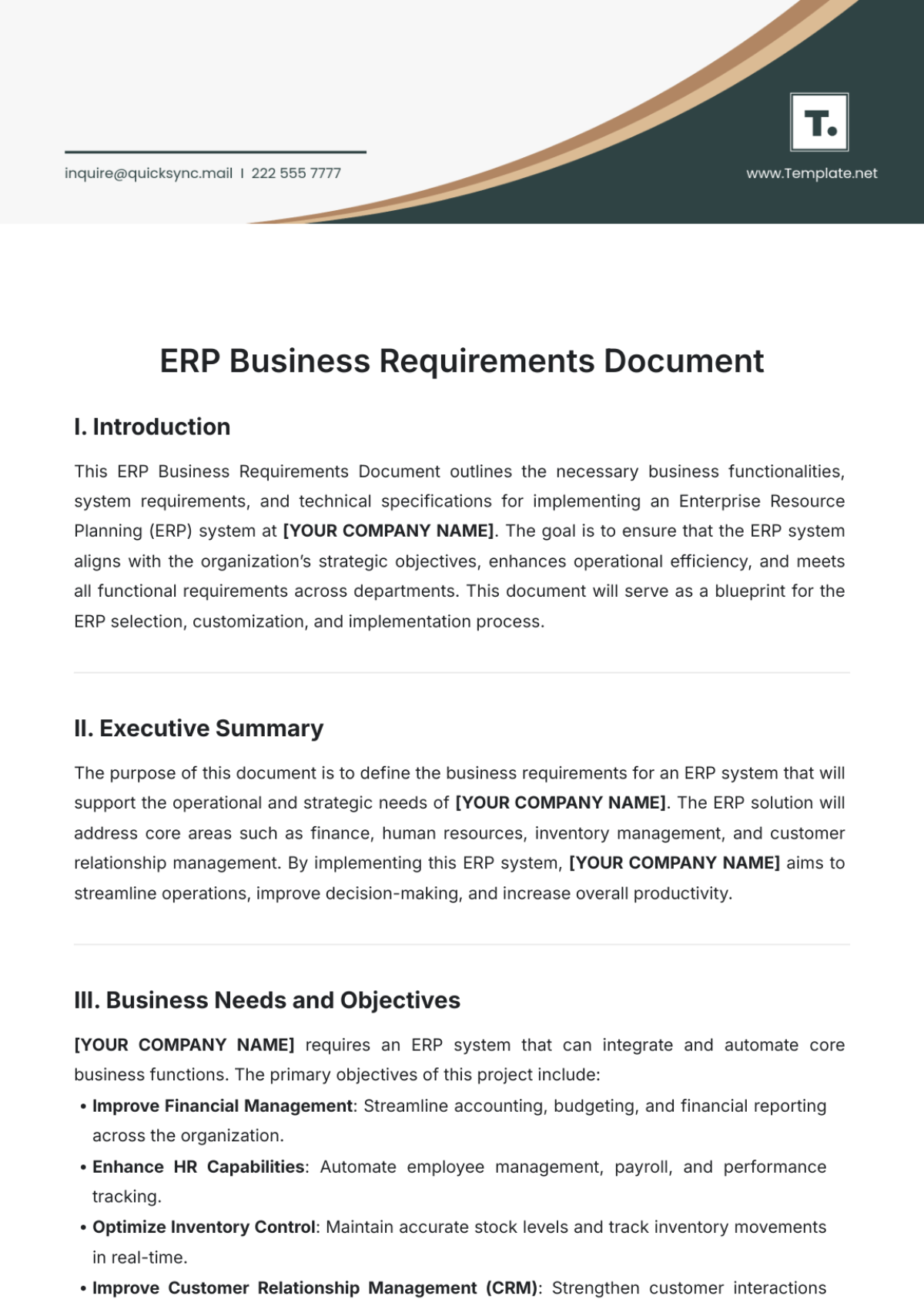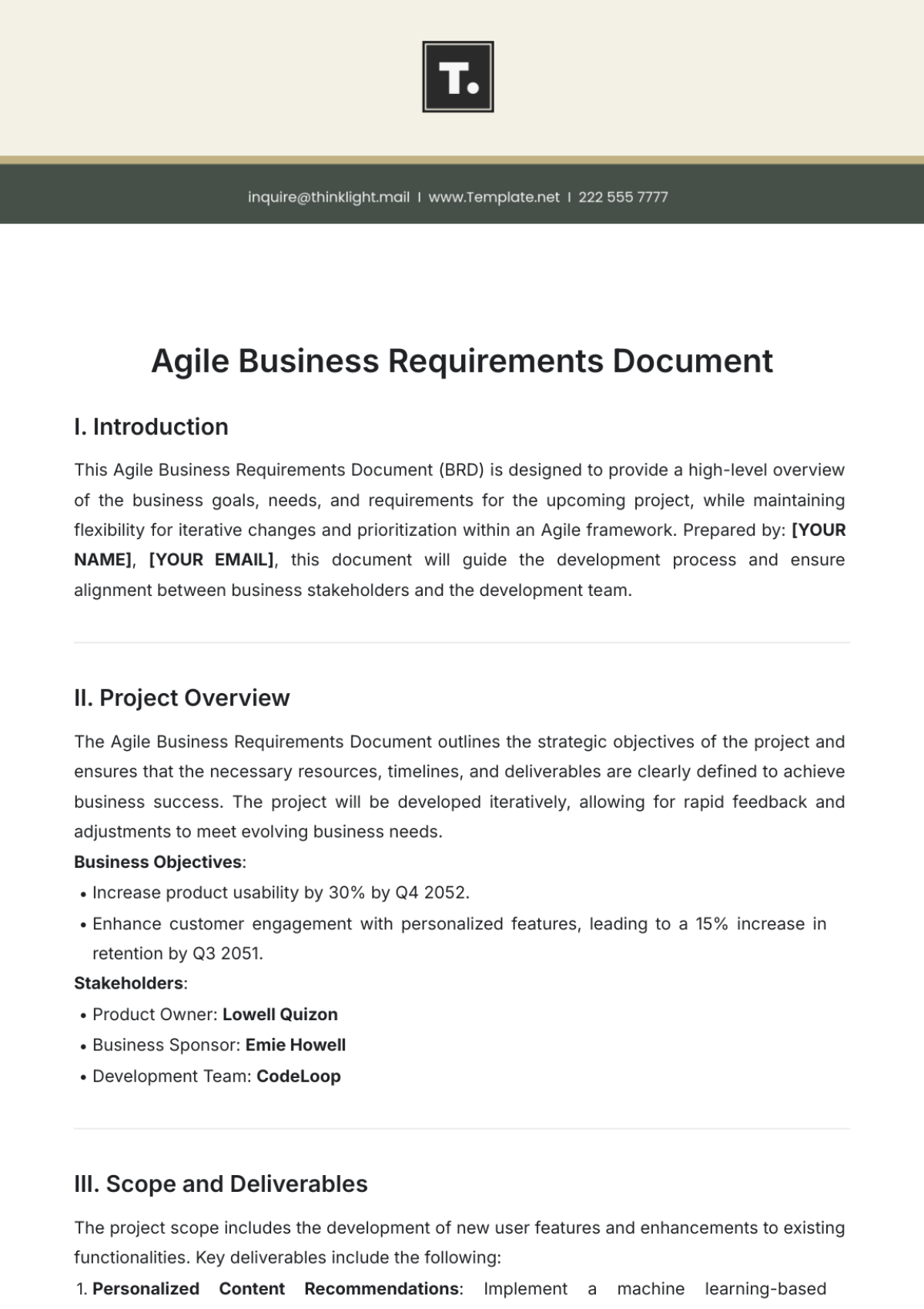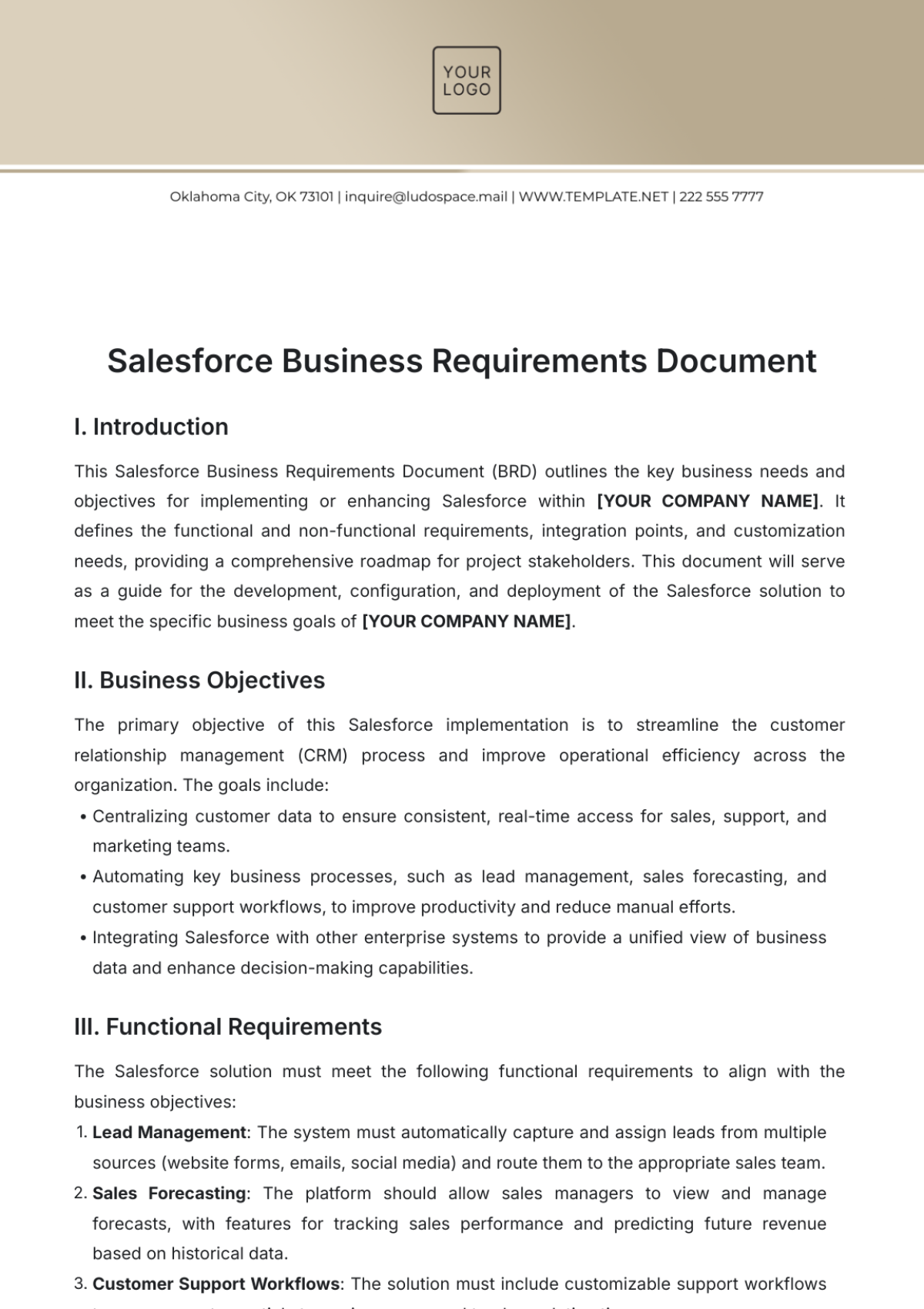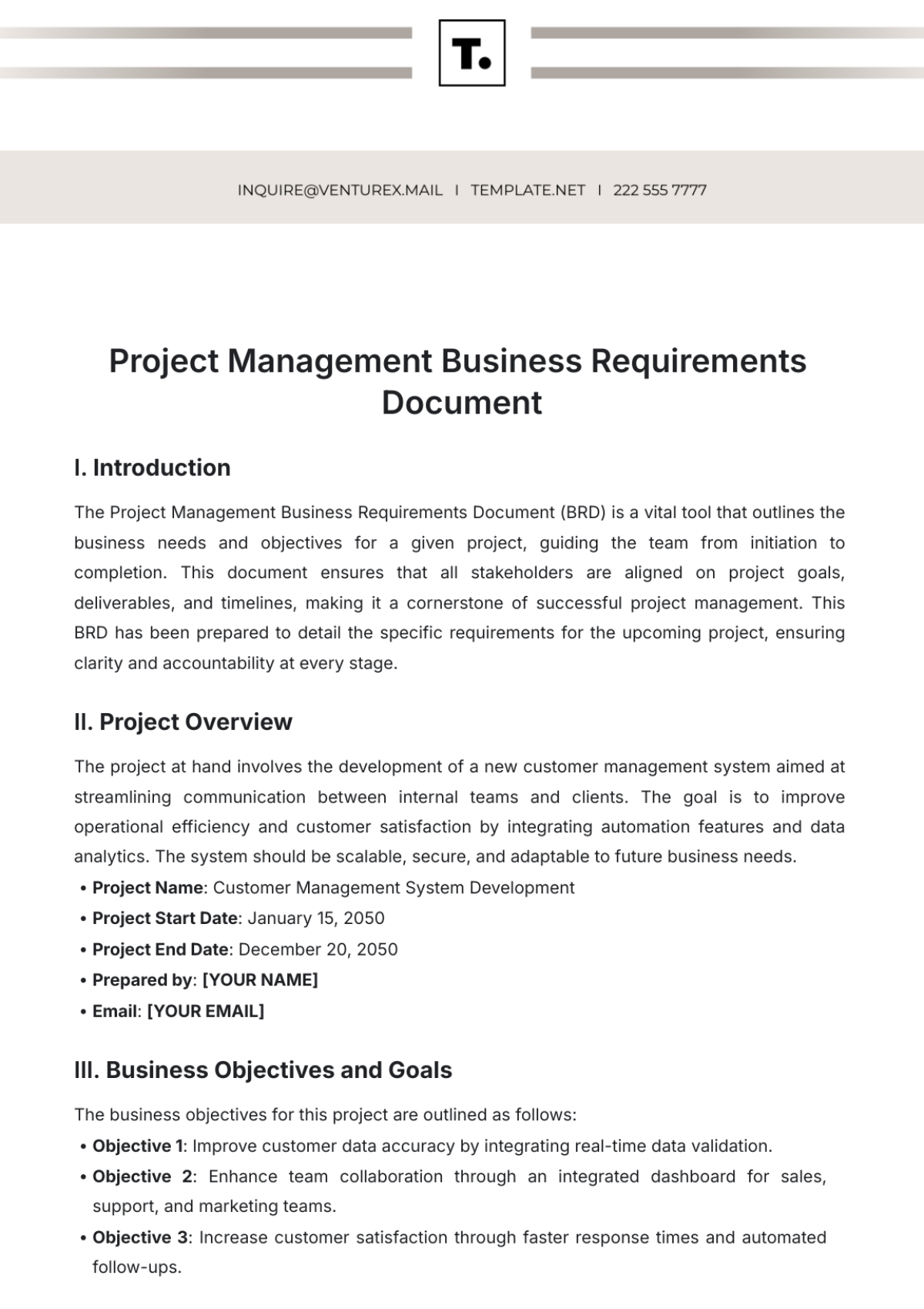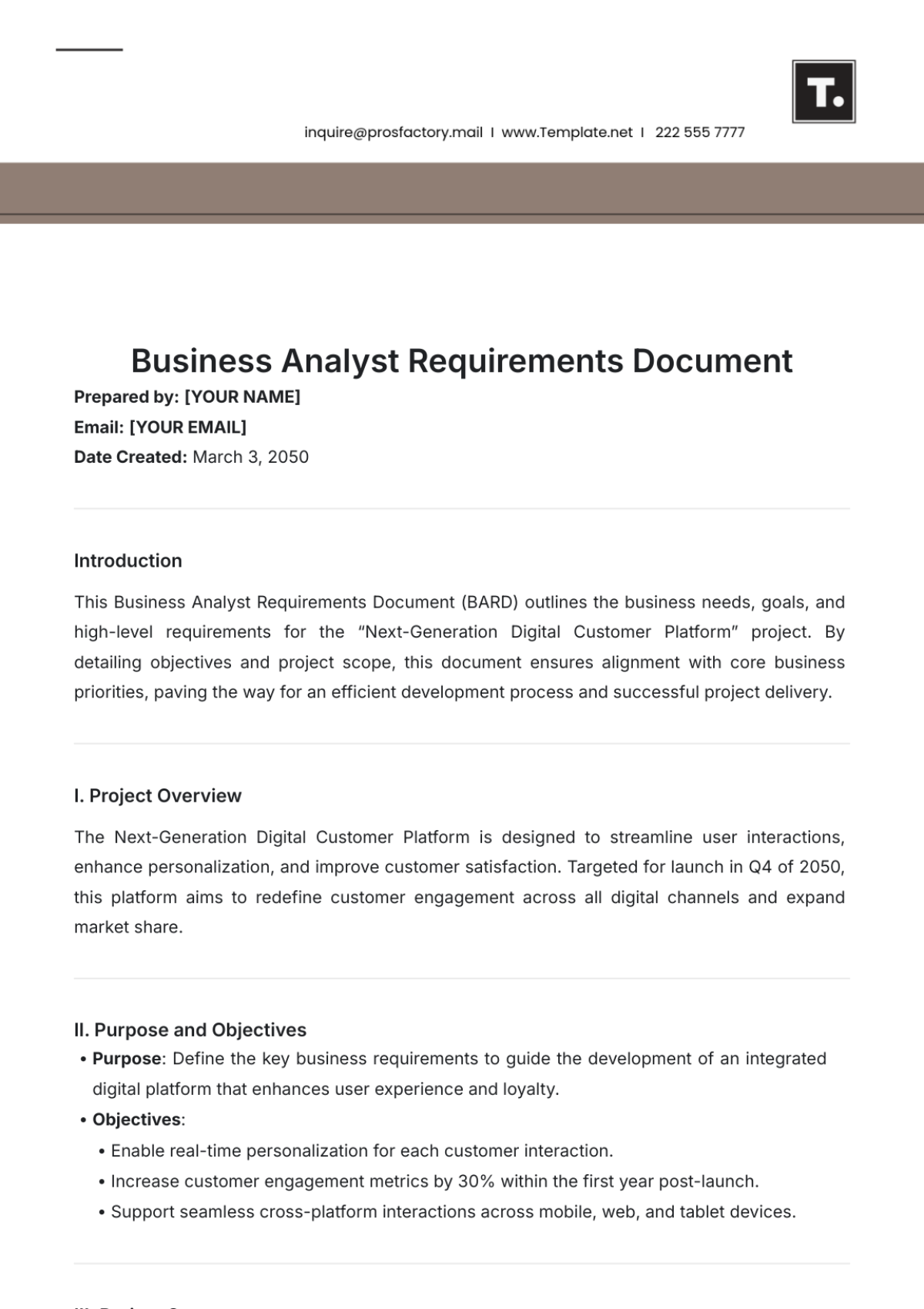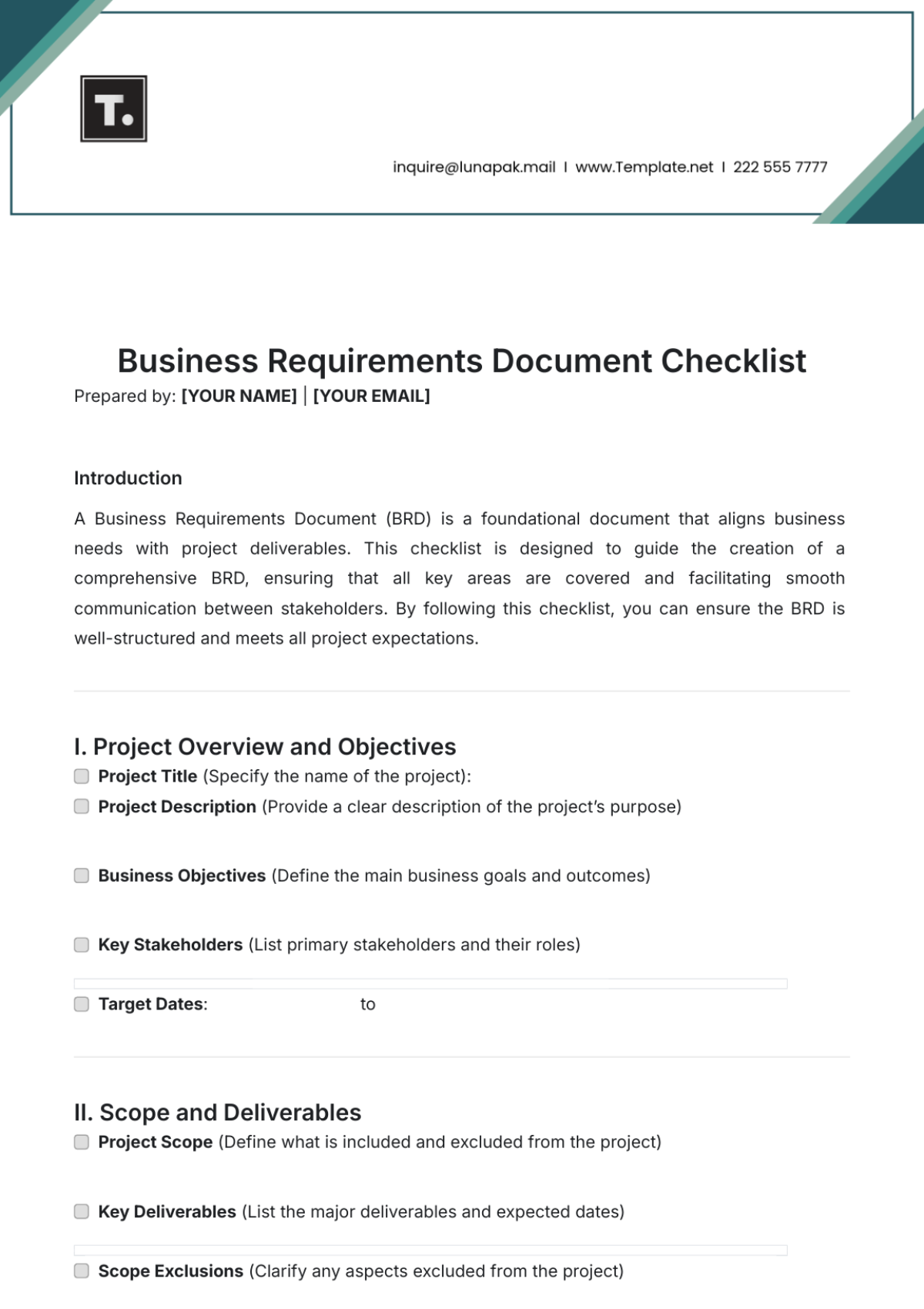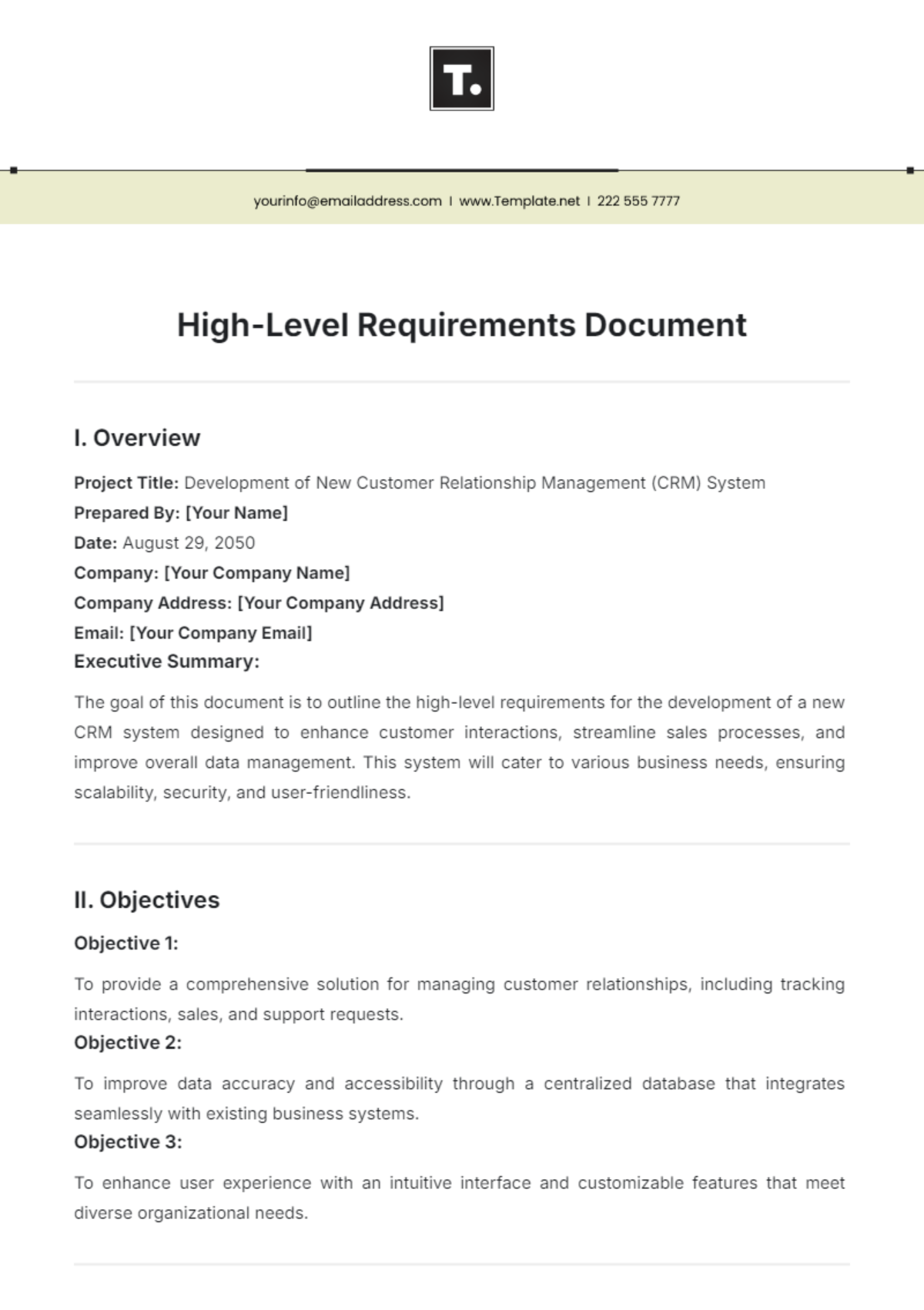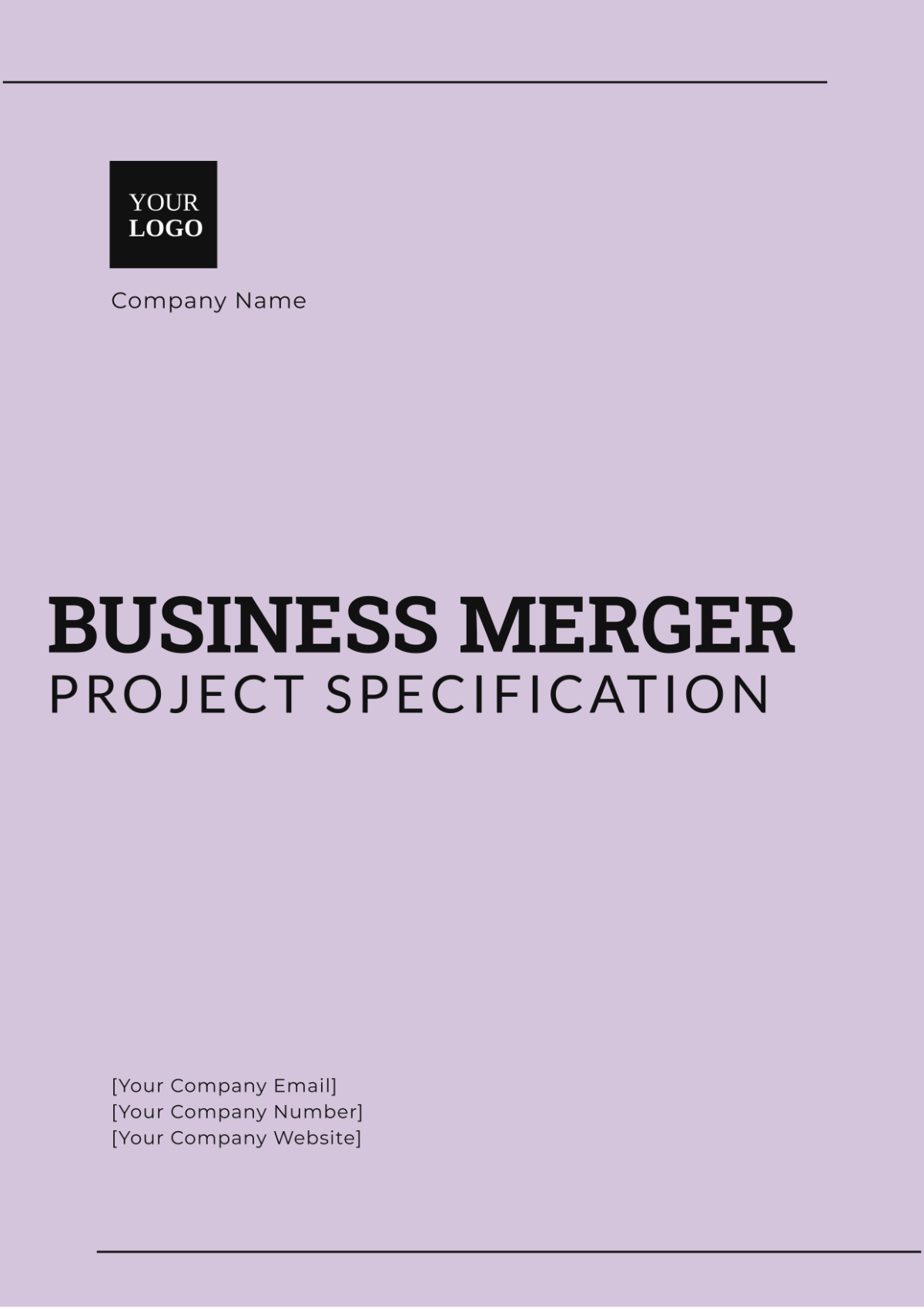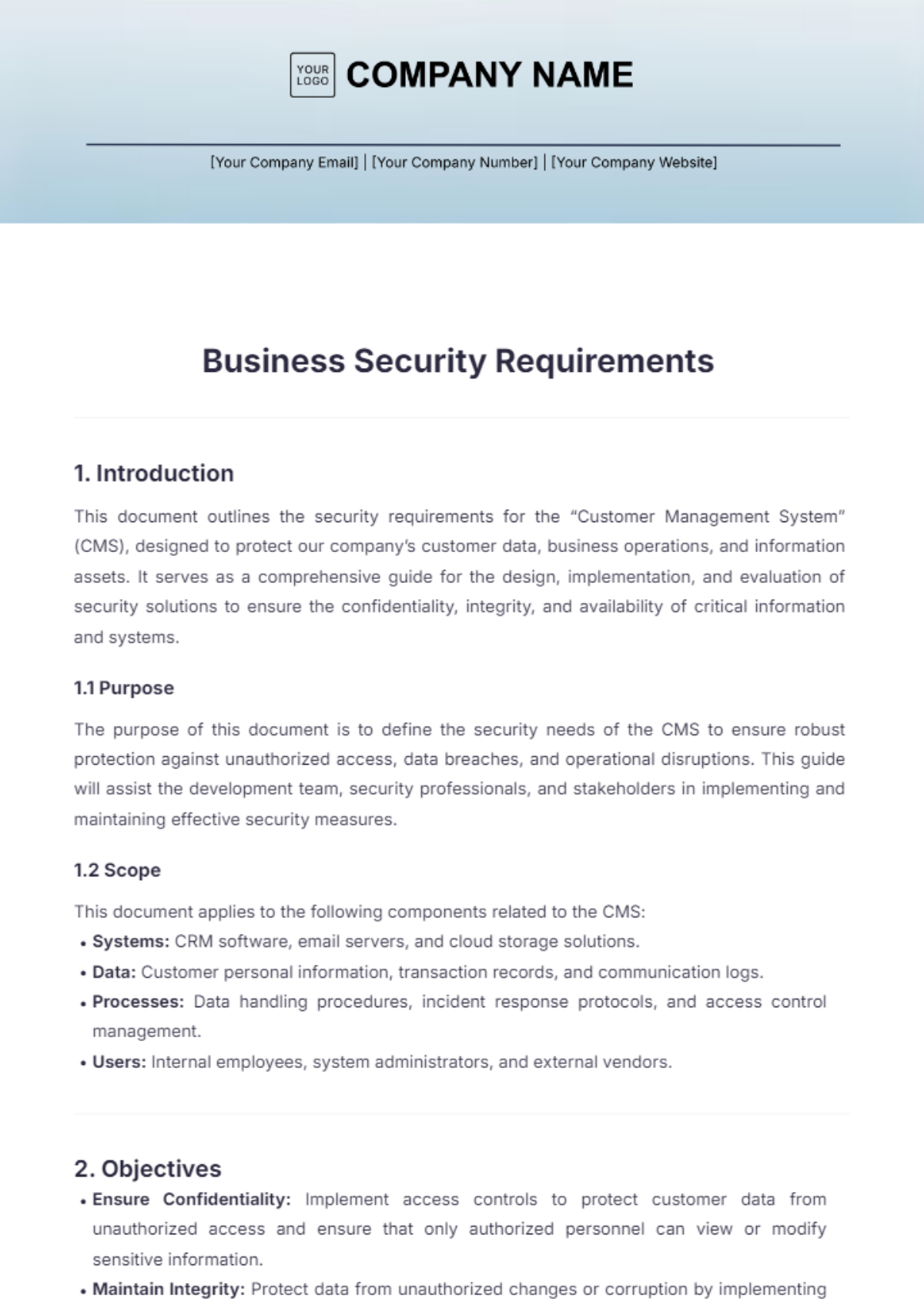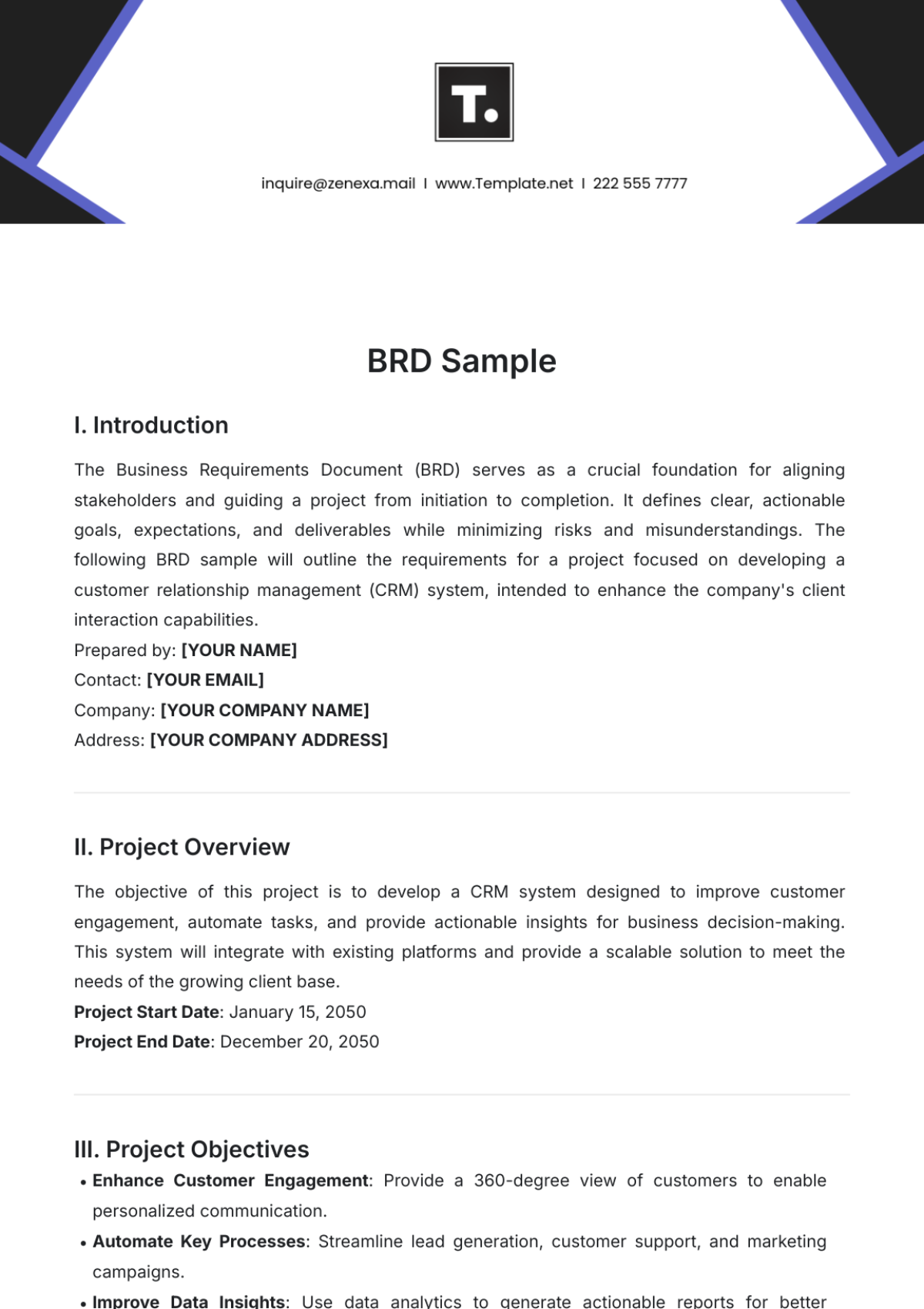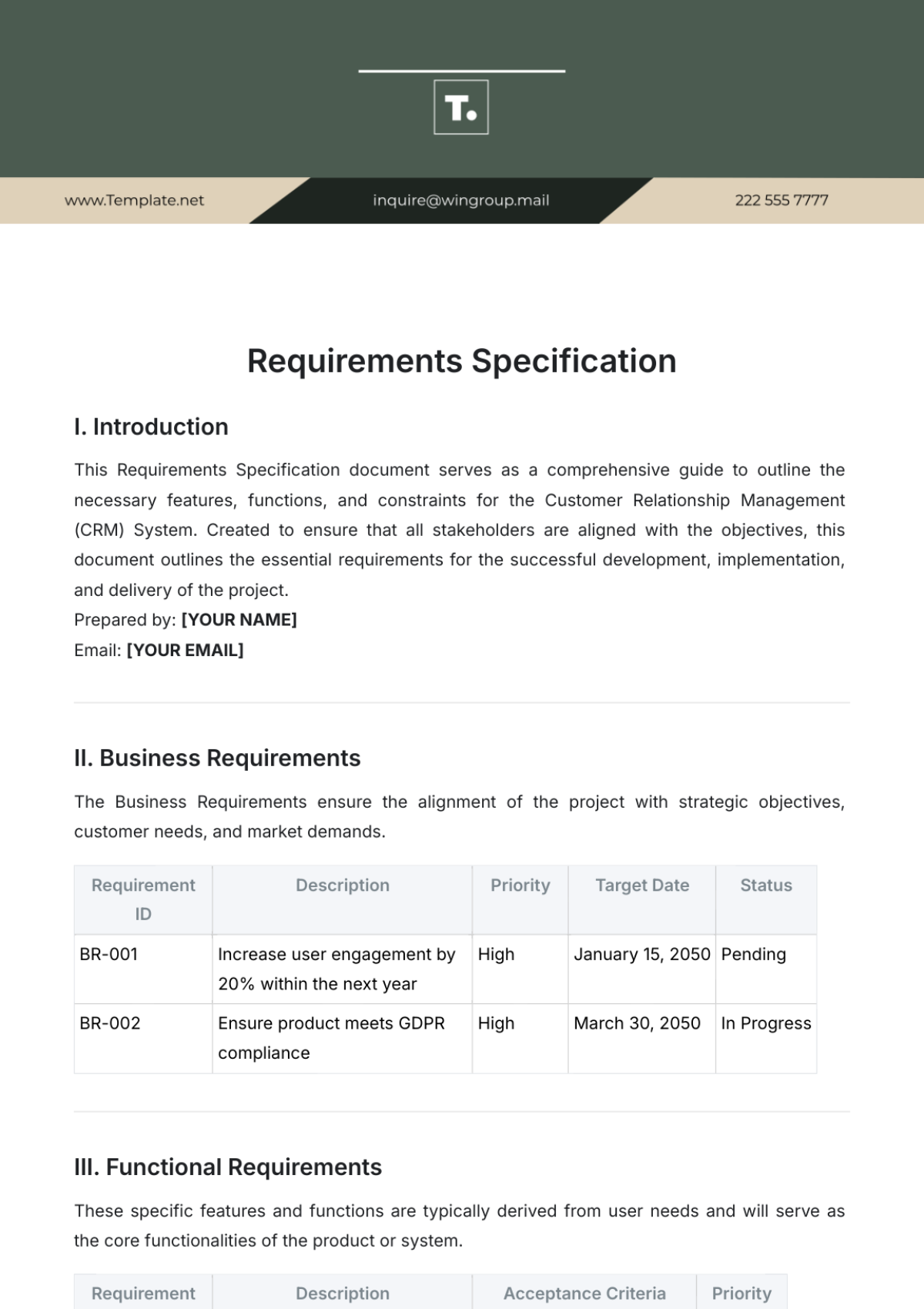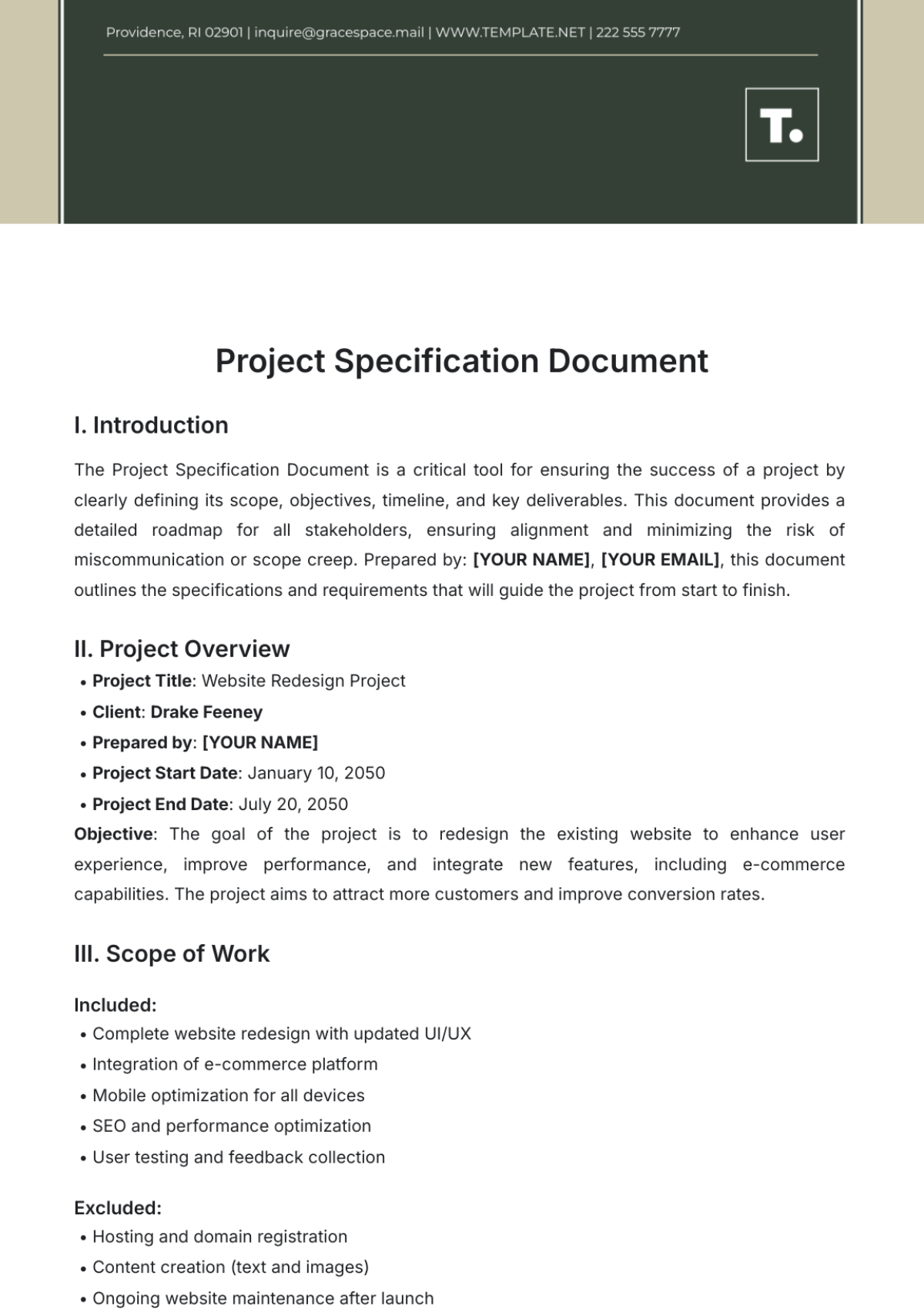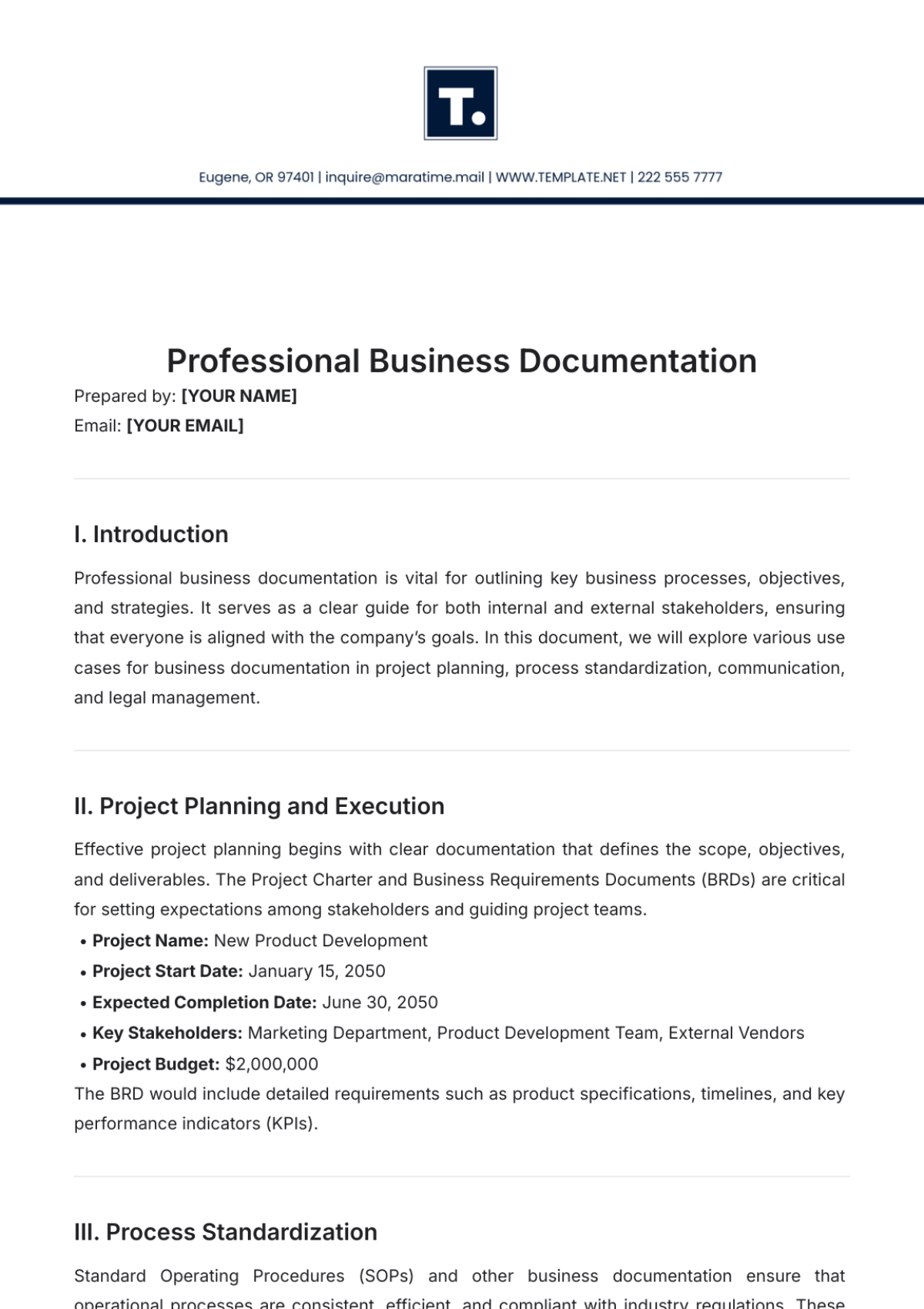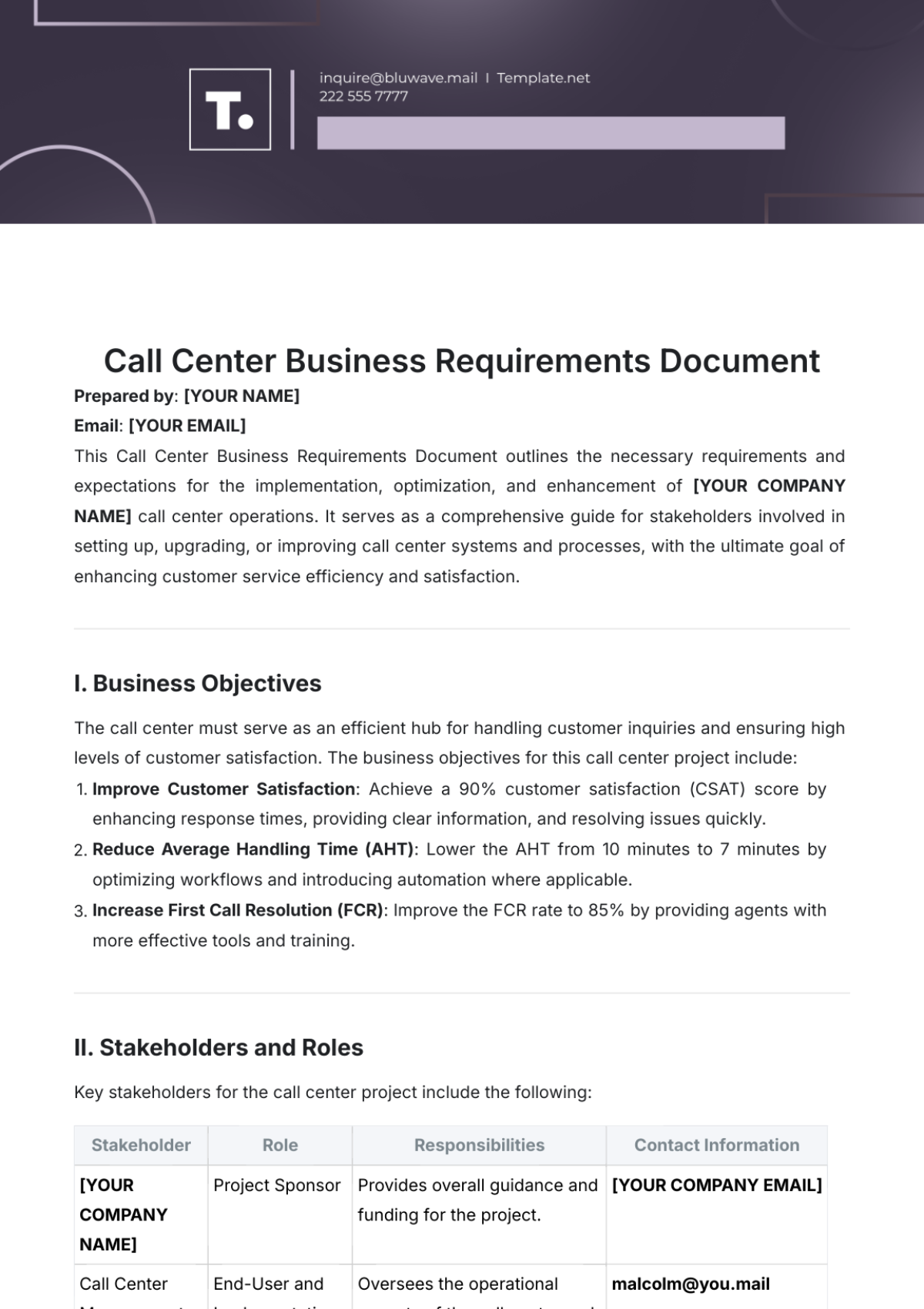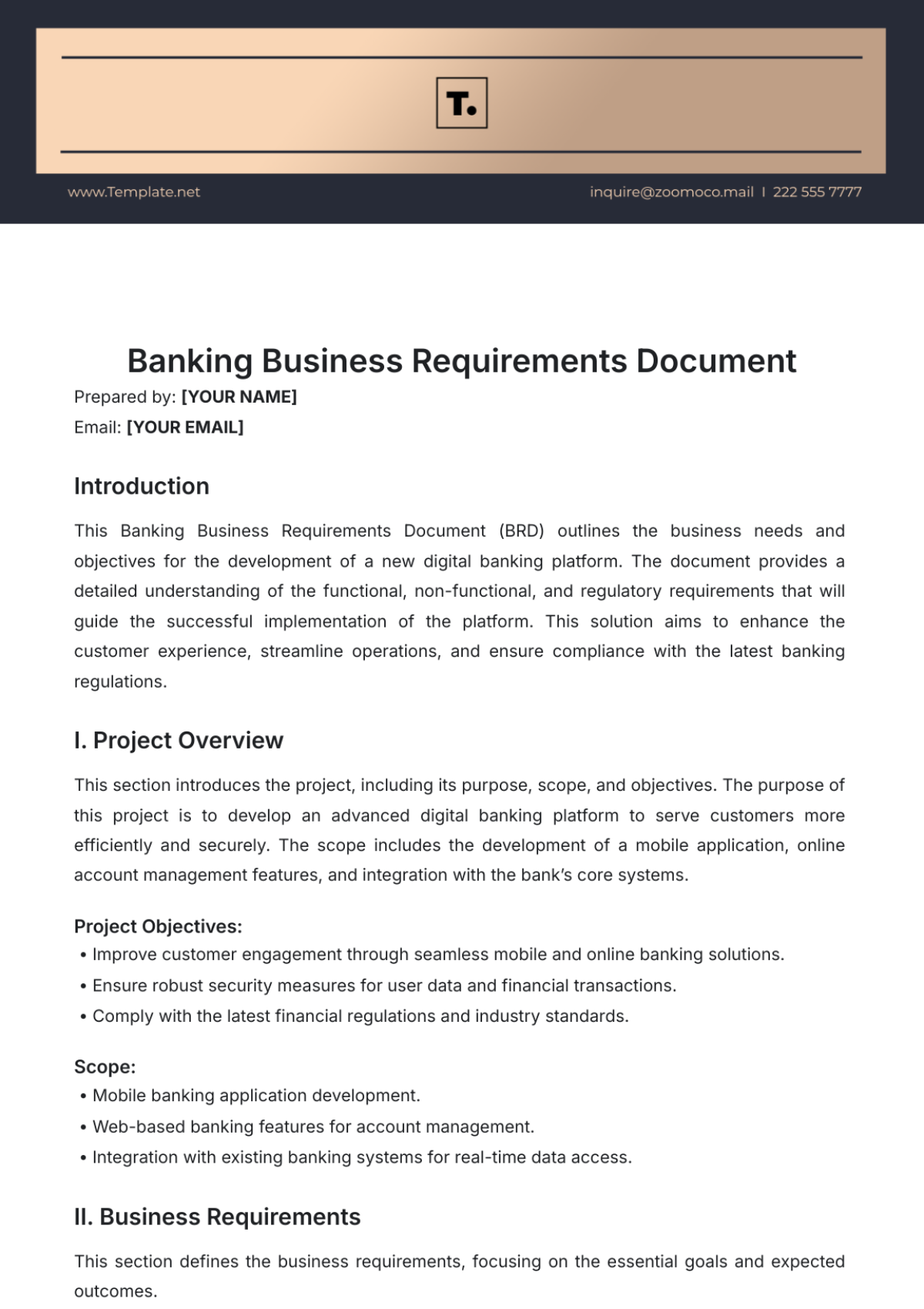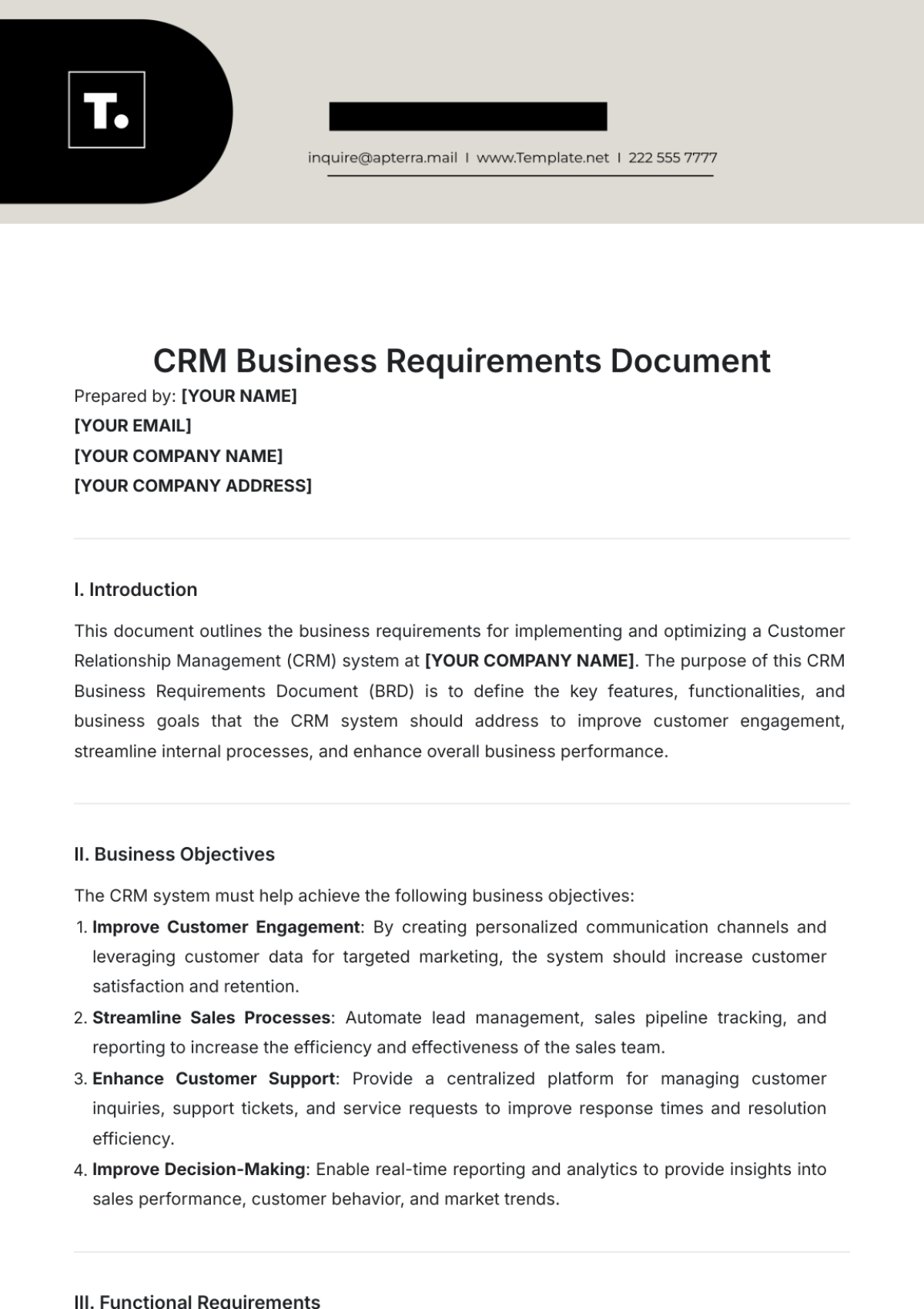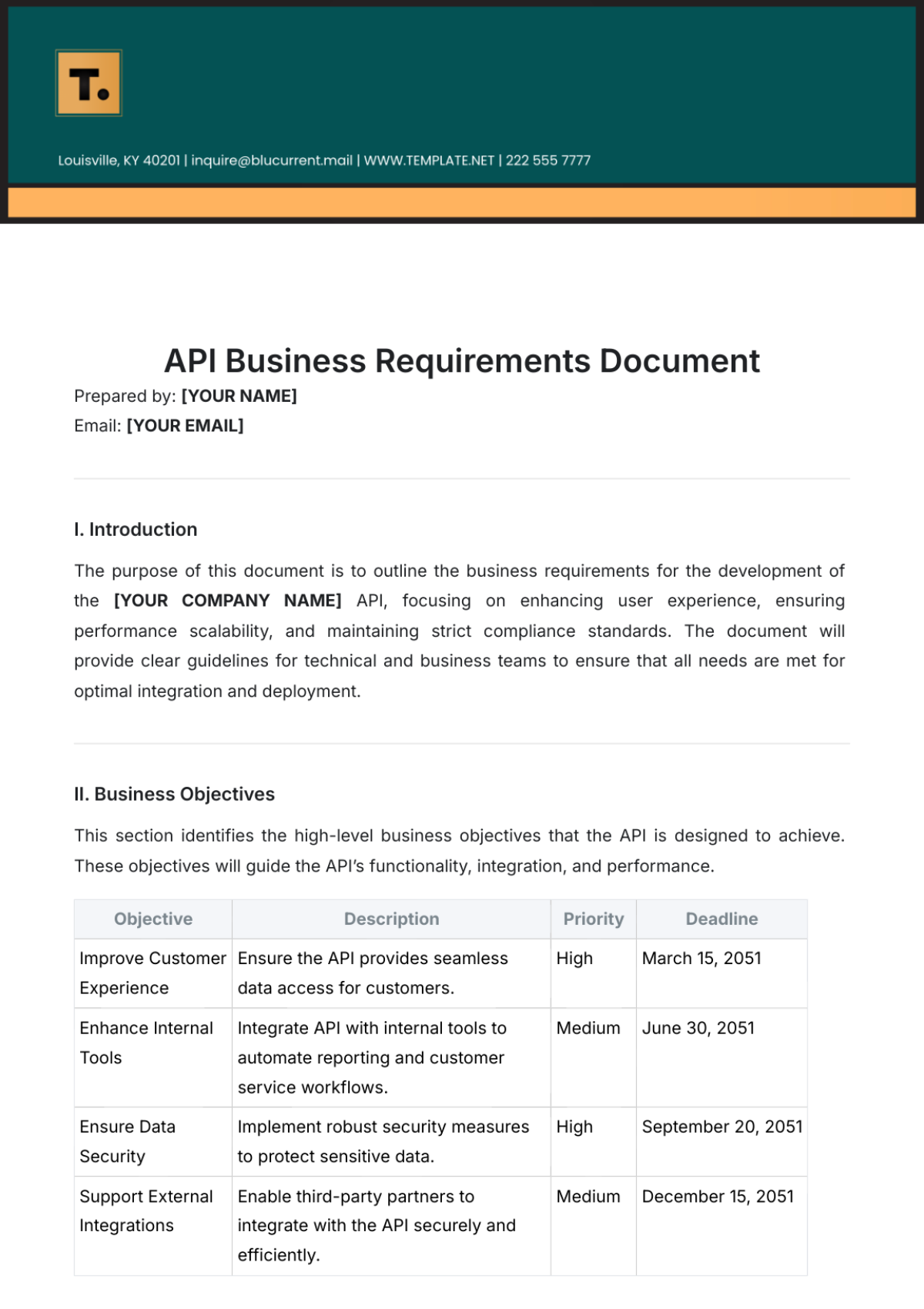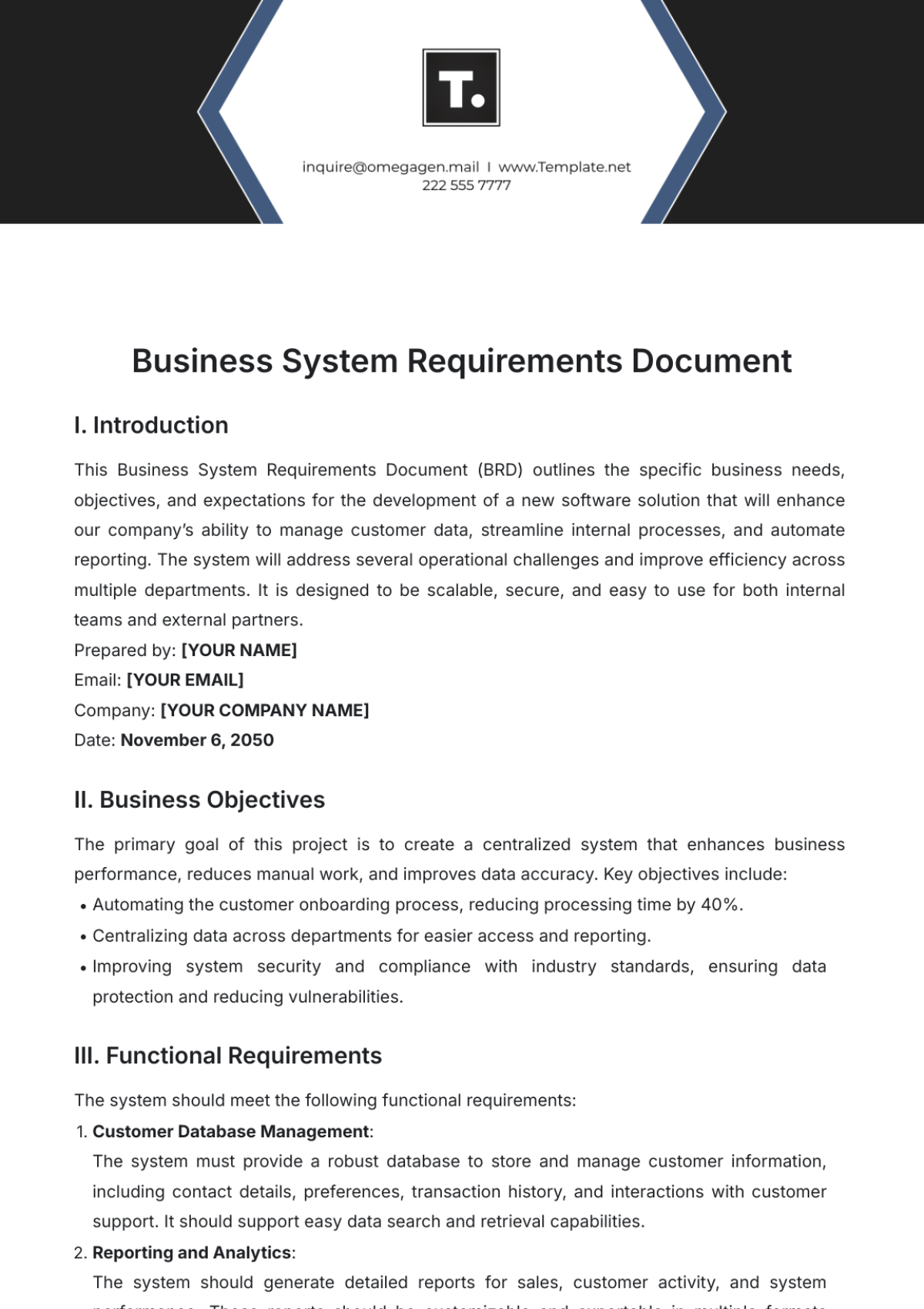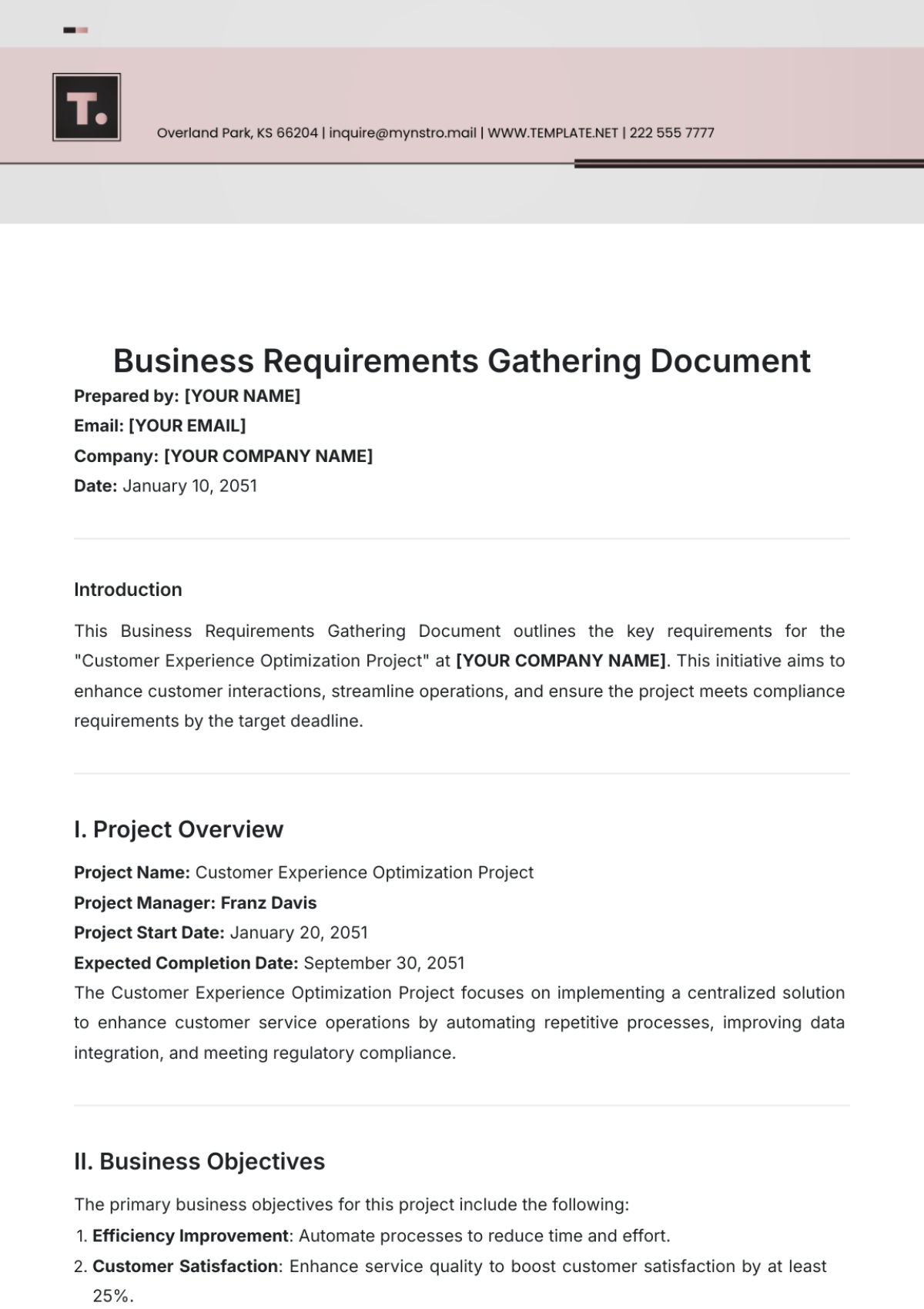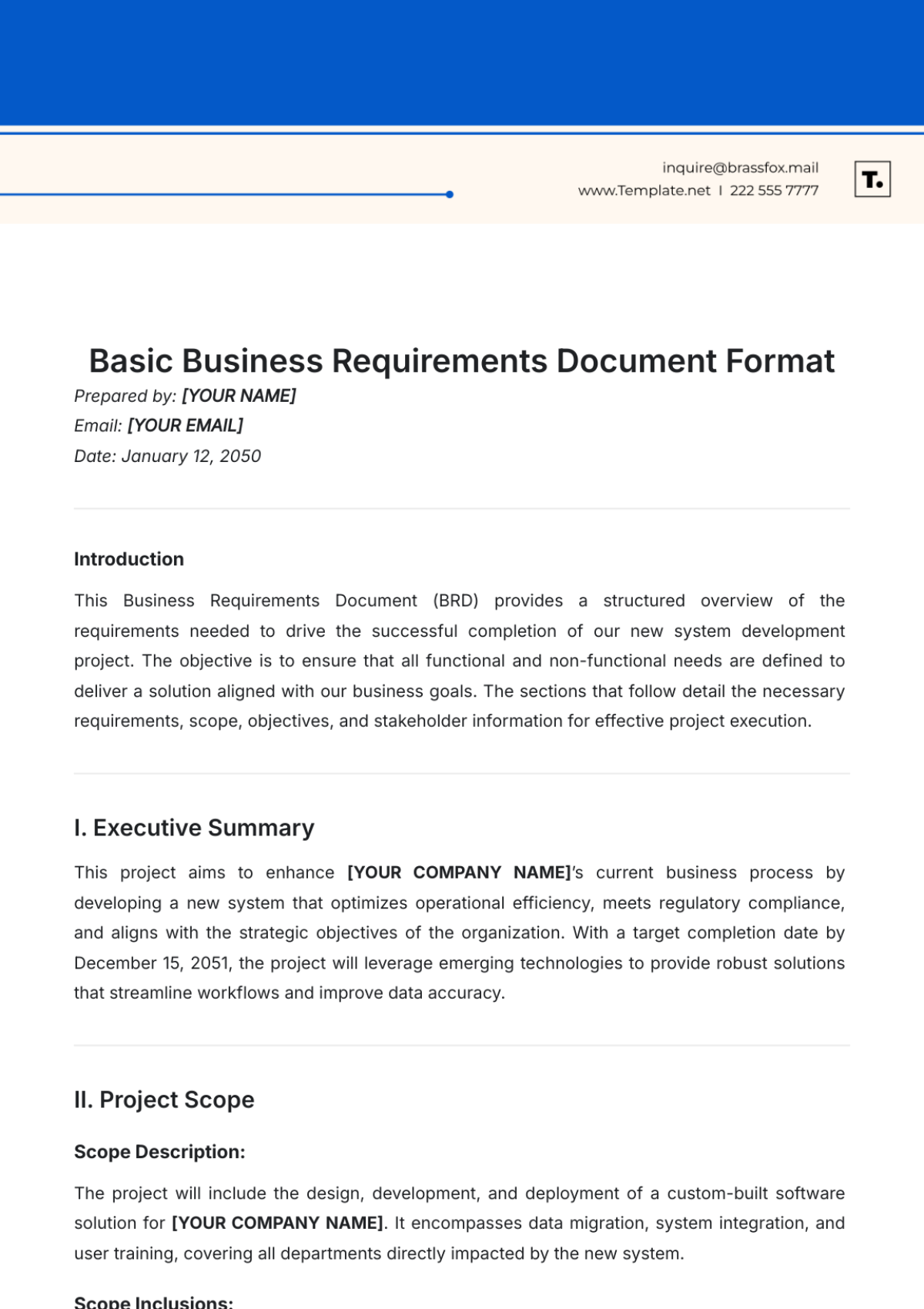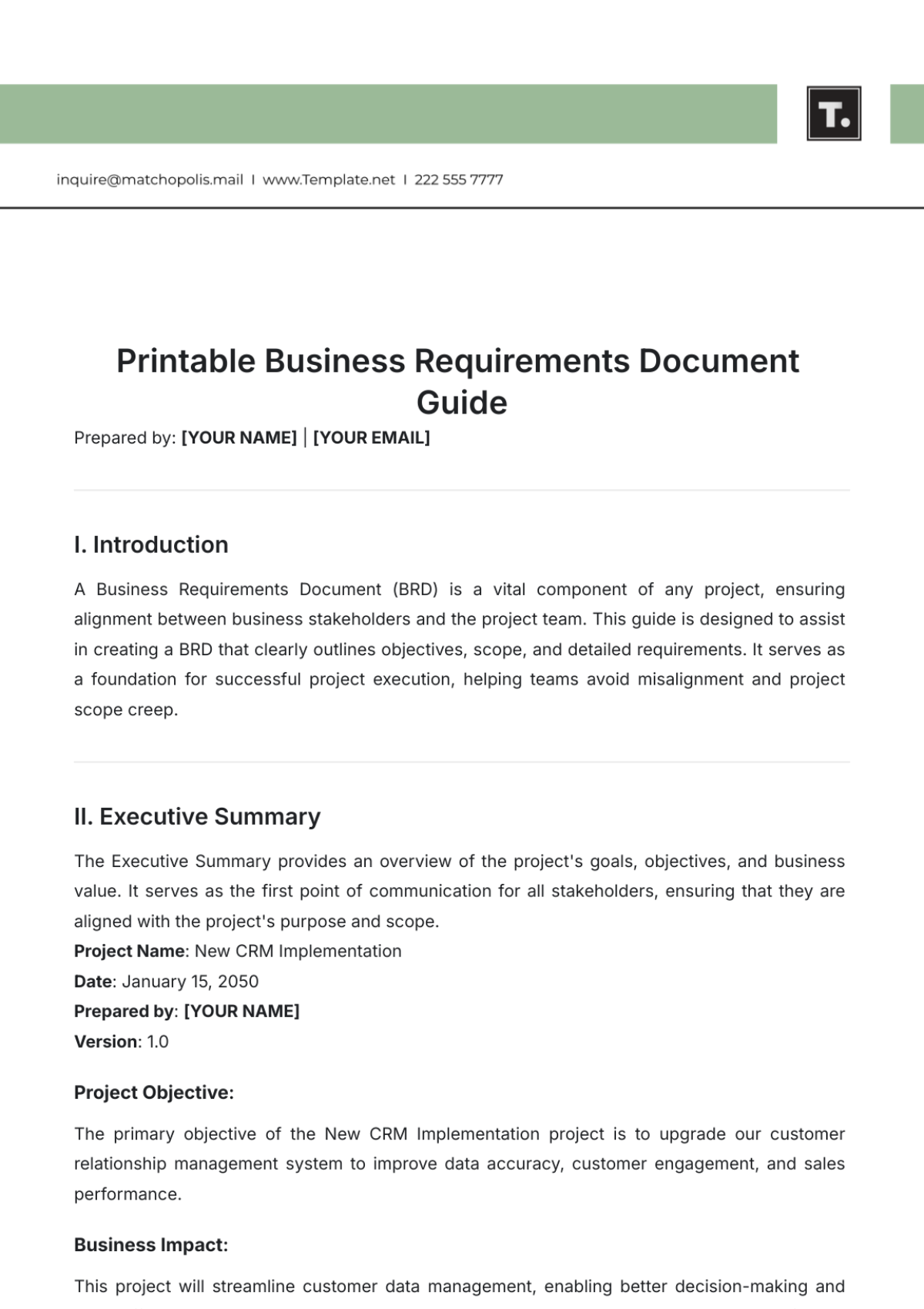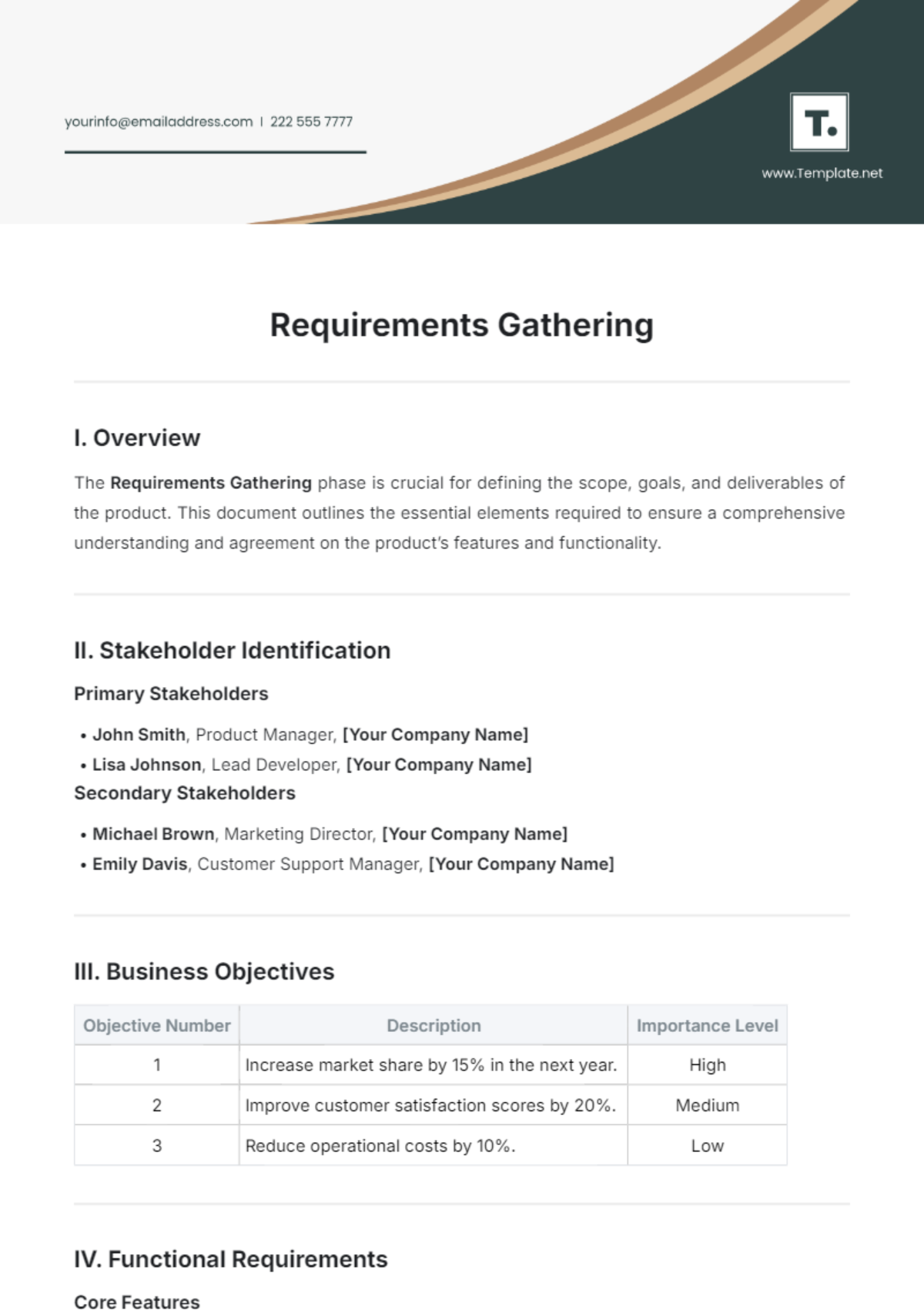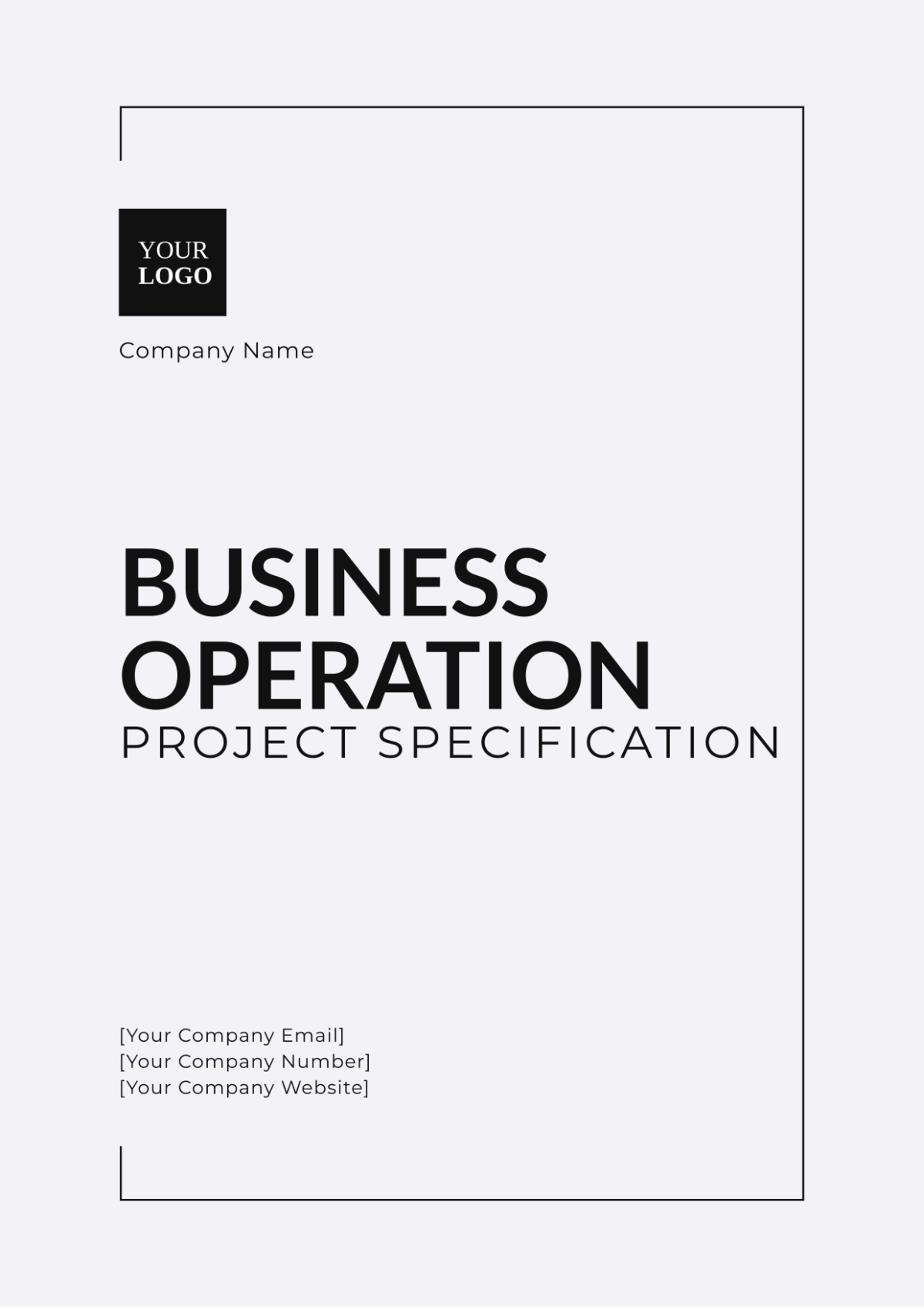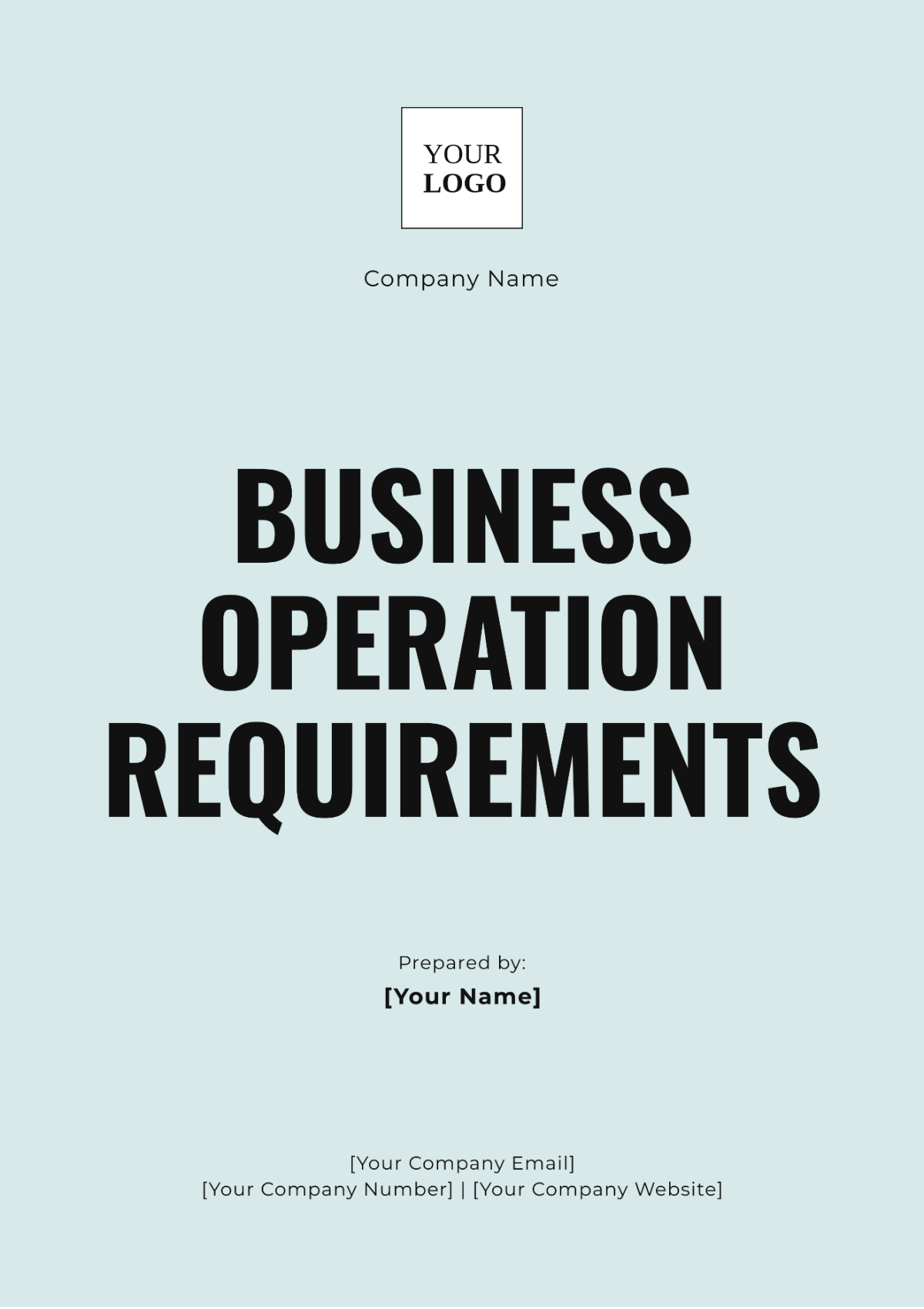Requirements Gathering
I. Stakeholder Identification
Primary Stakeholders
John Smith, Product Manager, [Your Company Name]
Lisa Johnson, Lead Developer, [Your Company Name]
Secondary Stakeholders
Michael Brown, Marketing Director, [Your Company Name]
Emily Davis, Customer Support Manager, [Your Company Name]
II. Business Objectives
Objective Number | Description | Importance Level |
|---|---|---|
1 | Increase market share by 15% in the next year. | High |
2 | Improve customer satisfaction scores by 20%. | Medium |
3 | Reduce operational costs by 10%. | Low |
III. Functional Requirements
Core Features
User Authentication: Secure login and registration process.
Data Management: Efficient handling and storage of user data.
Reporting Tools: Real-time analytics and reporting capabilities.
User Roles
Role | Permissions | Description |
|---|---|---|
Administrator | Full access to all features and settings | Manages users, settings, and data |
Regular User | Access to core functionalities | Uses the system for daily tasks |
Guest | Limited access | Views content without editing capabilities |
IV. Non-Functional Requirements
Performance Metrics
Response Time: The system should respond to user requests within 2 seconds.
Uptime: System availability should be 99.9% annually.
Scalability: Ability to handle up to 100,000 concurrent users.
Security Requirements
Data Encryption: All sensitive data must be encrypted both in transit and at rest.
Access Controls: Role-based access control to prevent unauthorized access.
V. Technical Constraints
Platform Requirements
Operating Systems: Compatible with Windows 10 and macOS 10.15 or later.
Browsers: Supports latest versions of Chrome, Firefox, and Safari.
Integration Needs
Third-Party APIs: Must integrate with Google Analytics and Stripe for payment processing.
VI. Project Timeline
Phase | Start Date | End Date | Duration |
|---|---|---|---|
Requirements Gathering | 01-Jan-2050 | 15-Jan-2050 | 15 days |
Design & Prototyping | 16-Jan-2050 | 28-Feb-2050 | 6 weeks |
Development | 01-Mar-2050 | 30-Jun-2050 | 4 months |
Testing | 01-Jul-2050 | 15-Aug-2050 | 6 weeks |
Deployment | 16-Aug-2050 | 31-Aug-2050 | 2 weeks |
VII. Success Criteria
Key Performance Indicators (KPIs)
User Adoption Rate: Achieve 10,000 active users within the first 3 months of launch.
Customer Retention Rate: Maintain a retention rate of at least 80% after 6 months.
Evaluation Methods
User Feedback: Gather and assess user feedback through surveys and interviews.
Performance Analytics: Regularly track system performance and user engagement.
VIII. Appendices
Glossary
API: Application Programming Interface.
Encryption: Converting data to a secure format to prevent unauthorized access.
References
[Your Company Name] Internal Documentation
Industry Standards: ISO/IEC 27001
For further details or inquiries, please contact [Your Name] at [Your Email] or [Your Company Email].
